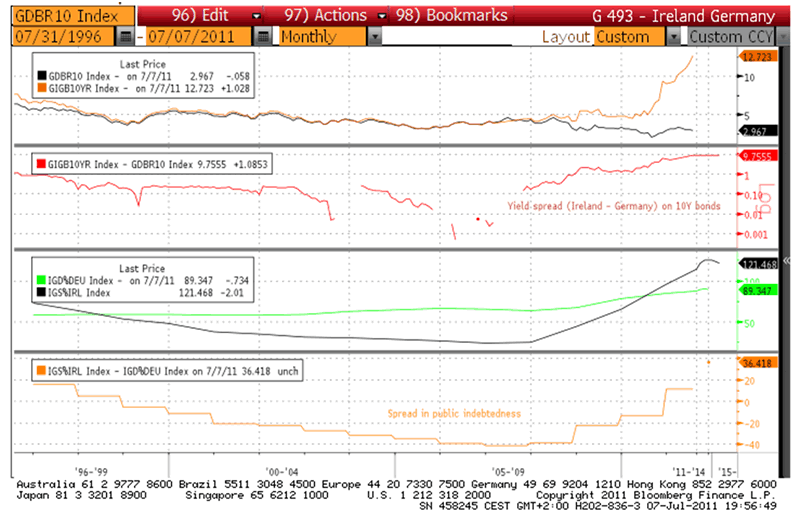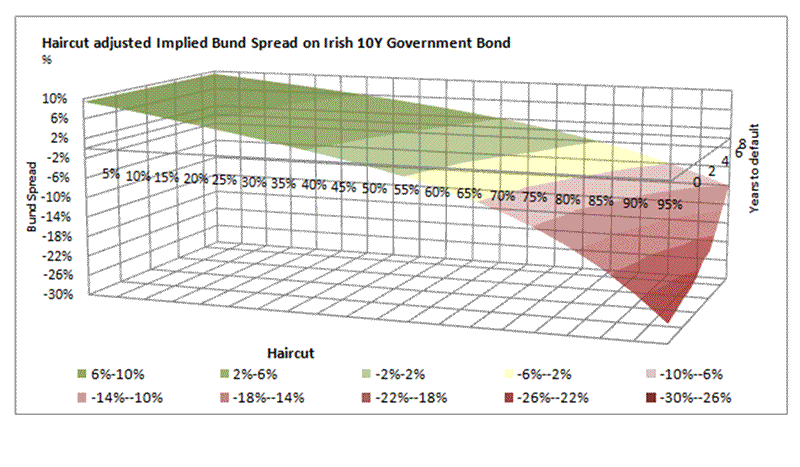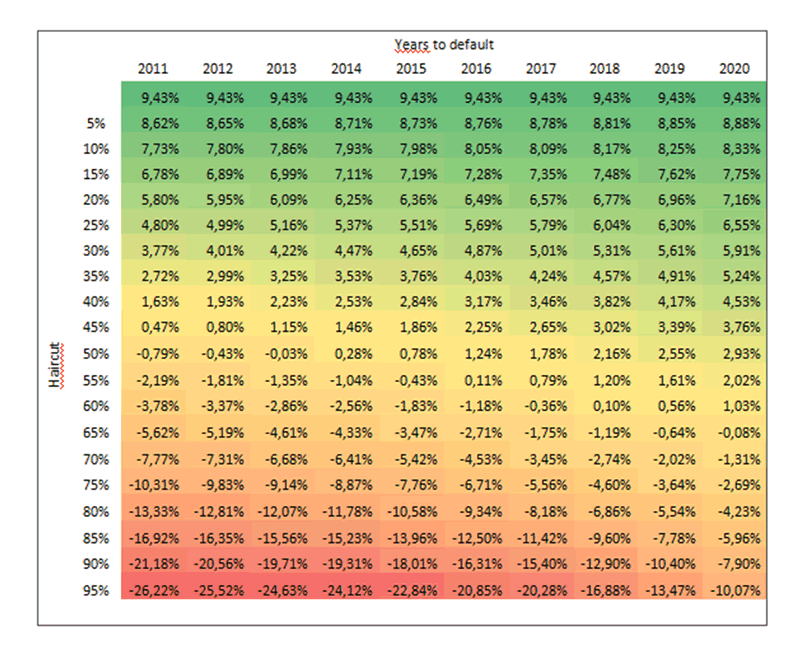Is The Irish Debt Attractive?
Interest-Rates / Global Debt Crisis Jul 08, 2011 - 02:45 AM GMTBy: Jan_Kaska
 According to a Bloomberg article, Sandor Steverink, the Europe’s best-performing sovereign debt fund manager over the last decade, asserted that when the Irish debt gets downgraded to junk, it is time to become a buyer. Steverink said he prefers Irish bonds to Portuguese ones as the country’s debt burden was caused by the banks and the country doesn’t have the structural problems of southern Europe’s economies. Above all, Ireland also has more potential to export its way out of trouble. We very much agree with such assessment and believe that once Ireland gets downgraded to junk, forced sellers will create a wonderful opportunity to buy.
According to a Bloomberg article, Sandor Steverink, the Europe’s best-performing sovereign debt fund manager over the last decade, asserted that when the Irish debt gets downgraded to junk, it is time to become a buyer. Steverink said he prefers Irish bonds to Portuguese ones as the country’s debt burden was caused by the banks and the country doesn’t have the structural problems of southern Europe’s economies. Above all, Ireland also has more potential to export its way out of trouble. We very much agree with such assessment and believe that once Ireland gets downgraded to junk, forced sellers will create a wonderful opportunity to buy.
Let us provide you for some facts and explanation, why we think Irish bonds at today’s prices are already a good deal. And in case debt gets downgraded further, the deal will be so much sweeter. As of today, Irish 10Y government bonds are yielding in excess of 12% p.a. and trade at 60% of par value. Let us look at what is actually priced in?
Going back into history as far as 1997, before Ireland's accession to EMU, Irish public debt traded with roughly 100bps premium to German Bunds. So if Ireland goes through a default of sufficient size so that its debt trajectory is on sound foundation, we believe spreads should compress back to 100bps or possibly even lower. Remember that Germany is currently bearing public debt worth of 89% of GDP and faces a possibility of having to bail out certain Landesbanken in the not so distant future.

In 2012, Irish debt will rise to 120% of GDP on the back of further banking sector recapitalization and a budget deficit reflecting the huge output gap. According to Goldman Sachs report from the end of last year, additional capital required for Irish banks may reach as much as €35bn over next 5 years, which is roughly 23% of GDP.
If we assume some modest GDP growth of roughly 2-3% in current prices, gradual improvement in the budget deficit (Ireland is actually on schedule with the IMF budget deficit reduction plan) and NAMA turning into modest profit, than Irish public debt should end up no higher than 130% of GDP in the 2013/2014 period. Afterwards, it should start gradually declining on the back of GDP growth led by exports as Ireland has already regained a lot of lost competitiveness thanks to brutal deflation in wages.
Therefore if Ireland were to default in 2013/2014, which marks a confluence of periods when Ireland reaches a primary surplus (a precondition for successful default as the country will not have to tap debt markets) and runs out of money, we see roughly two possible outcomes:
a) haircut of 40% while reaching public debt of 80% of GDP – 100 bps spread to German Bunds
b) haircut of 55% while reaching public debt of 60% of GDP – 0 bps spread to German Bunds
We have built a map where Irish debt should be trading given the assumption of haircut and number of years to default.

Current pricing is more favorable than our assumption of 40% haircut in 2013/2014 and 100 bps spread to Bunds (currently priced @ 223bps over Bunds). If Irelend got more stringent with is creditors and decided for a 55% haircut, than current loss-adjusted implied spread over Bunds stands at negative 135 bps, which is still positive yield in absolute terms, but not truly attractive, as it is 135 bps below our prediction where clean Irish bond should trade. In order to get our predicted attractive yield, we would wait for the price of Irish 4.5% coupon 2020 bond to fall to levels around 54-55, or yields equal to 13.50% p.a.

We also feel that Irish bond has an embedded option in the form of Ireland actually not defaulting on its sovereign bond, but letting the bank senior bondholders feel the pain and thus avoiding any further bank recapitalization. On contrary, and unfortunately as is the case with every other trade, there are some risks associated as well. We would keep us awake at night is the downside risk that European authorities decide to somehow subordinate private investors in the future.
By Jan Kaska
Analyst with ATWEL International Hedge fund
© 2011 Copyright Jan Kaska, - All Rights Reserved
Disclaimer: The above is a matter of opinion provided for general information purposes only and is not intended as investment advice. Information and analysis above are derived from sources and utilising methods believed to be reliable, but we cannot accept responsibility for any losses you may incur as a result of this analysis. Individuals should consult with their personal financial advisors.
© 2005-2022 http://www.MarketOracle.co.uk - The Market Oracle is a FREE Daily Financial Markets Analysis & Forecasting online publication.



